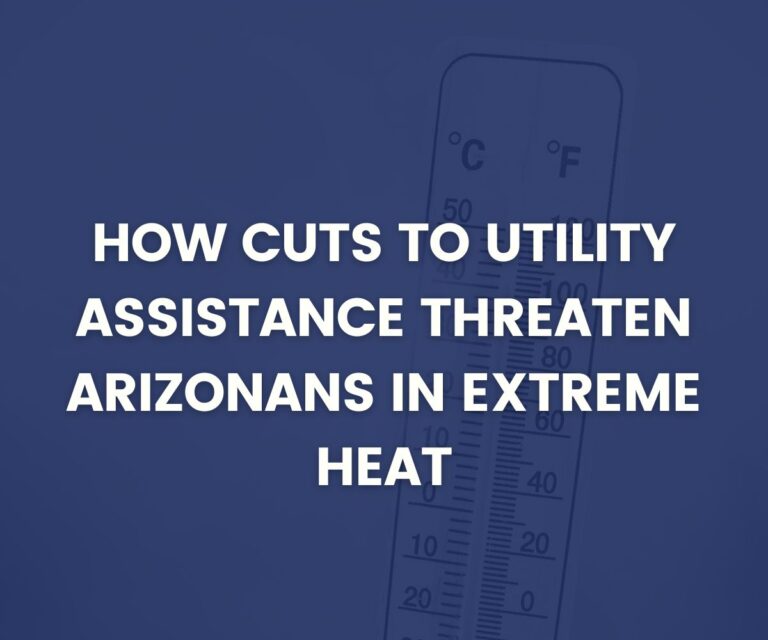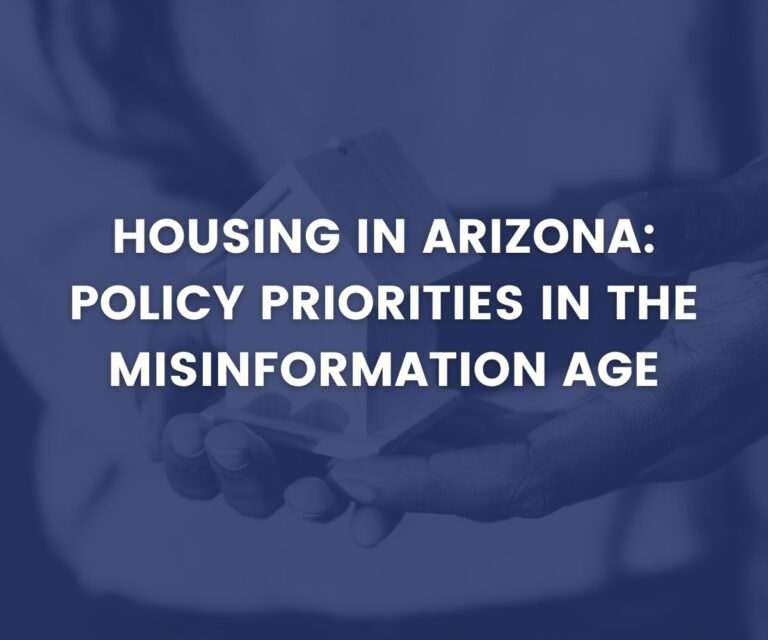
Arizona’s New Budget Will Improve the Lives of Many. Only Time Will Tell If It Provides Budget Stability.
The new state budget brings a ray of positivity for countless Arizonans, with numerous aspects to appreciate. There's increased funding for university scholarships, an expansion of KidsCare, and even a tax rebate, all of which can make a meaningful difference in people's lives. The allocation of $200 million for district school repairs and maintenance, along with over $610 million dedicated to building and fixing roads and highways, showcases a commitment to improving infrastructure. However, it's crucial to maintain a sense of concern. We must carefully consider whether the compromises made to attain this budget could potentially lead to an imbalance in our state’s financial situation.
Here’s how the budget compares to our legislative priorities
Education. The AZCenter prioritized education from kindergarten through college in its 2023 legislative agenda. The final budget:
- Eliminates results-based funding and invests the money into the funding formula. The budget eliminates results-based funding, which rewarded high-performing public schools based on the Arizona Merit examination. Instead, the $68 million will be invested into the funding formula, resulting in a 0.9 percent increase in Basic State Aid for all public schools.
- Makes a significant one-time increase in state aid. A $300 million one-time increase to the education funding formula.
- Increase funding for low-income students. An additional $13 million is dedicated to increasing the weight for students qualifying for the Free and Reduced-Price Lunch program.
- Increases funding for district and charter assistance. In addition to what the funding formula requires, the budget provides $20 million to pay for textbooks, equipment and other capital needs.
- Adds more literary coaches for public schools. To enhance literacy education, $3.1 million is allocated to hiring 25 new literary coaches.
- Continues to invest in school facilities. The budget continues to allocate $200 million for school building renewal grants.
- Lifts the Aggregate Expenditure Limit for the 2023-24 school year. Due to increased investments in public education as well as a change in how the education sales tax revenue is categorized, Arizona district schools are expected to exceed the constitutional spending limit on a regular basis from now on. The legislature is allowed to override the limit one year at a time. See how close Arizona is to the next deadline for lifting the Aggregate Expenditure Limit here: https://azchildren.org/news-and-events/the-clock-is-ticking-az-students-need-a-permanent-fix-to-the-school-spending-limit/
- Increases funding for rural and tribal community colleges. Adds $14 million in one-time funding is provided beyond the funding formula requirements.
- Funds Pima Community College operating aid. Maricopa and Pima community college districts were removed from the state operating funding formula. The new budget provides $2 million in one-time funding for Pima Community College, while Maricopa County Community College District remains unfunded.
- Invests in career and technical education workforce training at Arizona Western College. $15 million for workforce training at Arizona Western Community College (Yuma).
- Doubles the Promise program. Funding for the Promise program, which offers scholarships to Arizona high school graduates, has increased from $20 million to $40 million.
- Increases funding for future teachers. An additional $15 million is allocated to fund the Teachers Academy at state universities, bringing the total funding to $30 million.
Economic Well-Being. These measures aim to enhance economic well-being in Arizona by expanding access to healthcare, supporting local food systems, addressing housing and homelessness, and providing resources for microbusinesses.
- Makes more children eligible for KidsCare. The new budget increases the eligibility criteria for KidsCare, a program that offers health coverage to children. Previously, it covered those with family incomes between 133% and 200% of the federal poverty level. Now, eligibility extends to 225% of the federal poverty level, benefiting approximately 12,000 children.
- Allows Supplemental Nutrition Assistance Program (SNAP) recipients to purchase more local produce which benefits local growers. The budget allocates $5.5 million to the Double Up Food Bucks program, enabling SNAP recipients to purchase more local produce. This initiative benefits both recipients and local growers, fostering a healthier and more sustainable food system.
- Provides diapers and incontinence assistance. A budget provision of $1 million is dedicated to providing diapers and assistance for incontinence-related needs.
- Makes deposits into housing and homelessness funding programs. The budget addresses housing and homelessness through key measures. It includes a one-time deposit of $150 million into the Housing Trust Fund and allocates $40 million to the newly established Homeless Shelter and Services Fund.
- Increased housing funds for certain Arizonans. To further support housing needs, specific allocations are made. These include $1.9 million for military transitional housing, $5 million for housing for the elderly Arizonans through the Area Agencies Aging, and an additional $5 million for the Department of Correction's reentry and transitional housing program.
- Adds new funding for microbusiness loans. A total of $5 million is allocated for grants to community development financial institutions and nonprofits with experience in lending to microbusinesses.
Taxes
- Gives a tax rebate to eligible Arizonans as a benefit. To qualify, taxpayers must have dependents and a state tax liability of at least $1 for tax years 2021, 2020, or 2019. Those who meet these criteria will receive $250 for dependents under the age of 17 and $100 for dependents who are 17 years old or older. The rebate is limited to a maximum of three dependents per taxpayer. It's important to note that individuals with incomes too low to result in tax liability, those who eliminated their tax liability through tax credits, and those without dependents are not eligible for the rebate.
Concerns Surrounding the Budget
Despite the recognized need for increased investments in Arizona's children and families, the Arizona Center for Economic Progress expresses concerns about the passed budget if actual state revenues fall short or expenditures exceed projections.
The budget assumes a small ending balance that could easily evaporate. The projected ending balance for fiscal year 2024 is $7.8 million, which accounts for less than 1% of the projected revenue. If revenues fall below expectations, there is a high likelihood of an imbalanced budget. While the Rainy-Day Fund holds $1.4 billion, these funds would only provide a one-time solution. If ongoing spending surpasses ongoing revenue, the legislature will face two options: either make permanent spending cuts or implement permanent revenue increases.
The budget also lacks control on the growth of the Universal Empowerment Scholarship Account (ESA) Program. Within just eight months since applications opened, ESA enrollment (including existing categories) has increased from 13,200 to 56,134 students as of May 15, with nearly 1,000 new enrollees in a single week. Enrollments are expected to rise further as the new school year approaches. The impact on the state's General Fund depends not only on the number of ESA students but also on whether they were previously enrolled in public schools, which were partially funded through the General Fund. The absence of a cap or limiting criteria, such as an income threshold, means participation in the ESA program could exceed available funding. More information on ESAs can be found here: http://azeconcenter.org/arizona-school-vouchers-explained/
The budget provides only one-time funding for issues that appear to be ongoing. The budget process requires the legislature to identify projected ongoing revenues and expenditures for the two years following the year being appropriated. One-time expenditures are not included. While capital projects and highway construction and repairs are clearly one-time expenditures, other spending that has been categorized as one-time may actually be ongoing. Examples include the $12 million in the Department of Child Safety to replace discontinued federal and other funds, as well as the $60 million in the Department of Corrections to account for increased contract costs. Although the Statement of Revenues and Expenditures indicates over $700 million remaining at the end of fiscal year 2026, this figure would decrease if even a portion of the nearly $3 billion classified as one-time expenditures for fiscal year 2024 proves to be ongoing.



